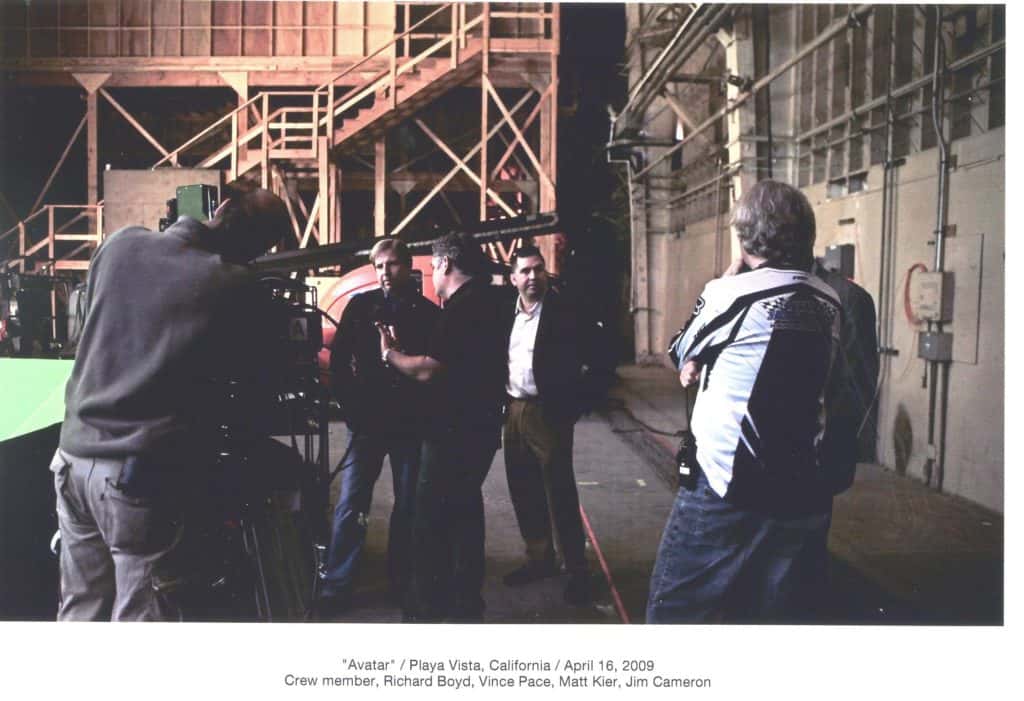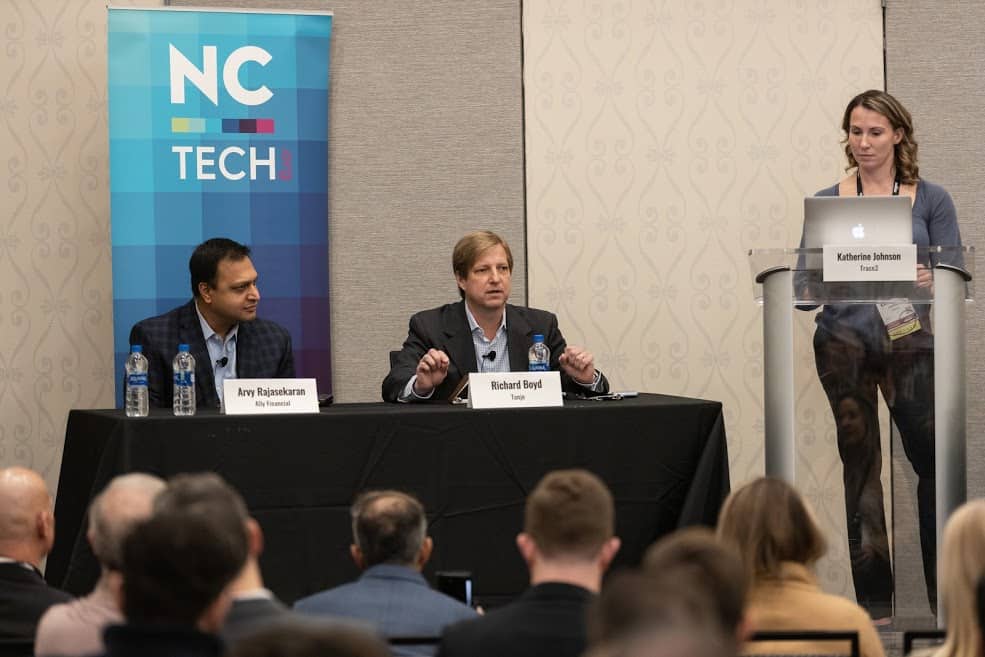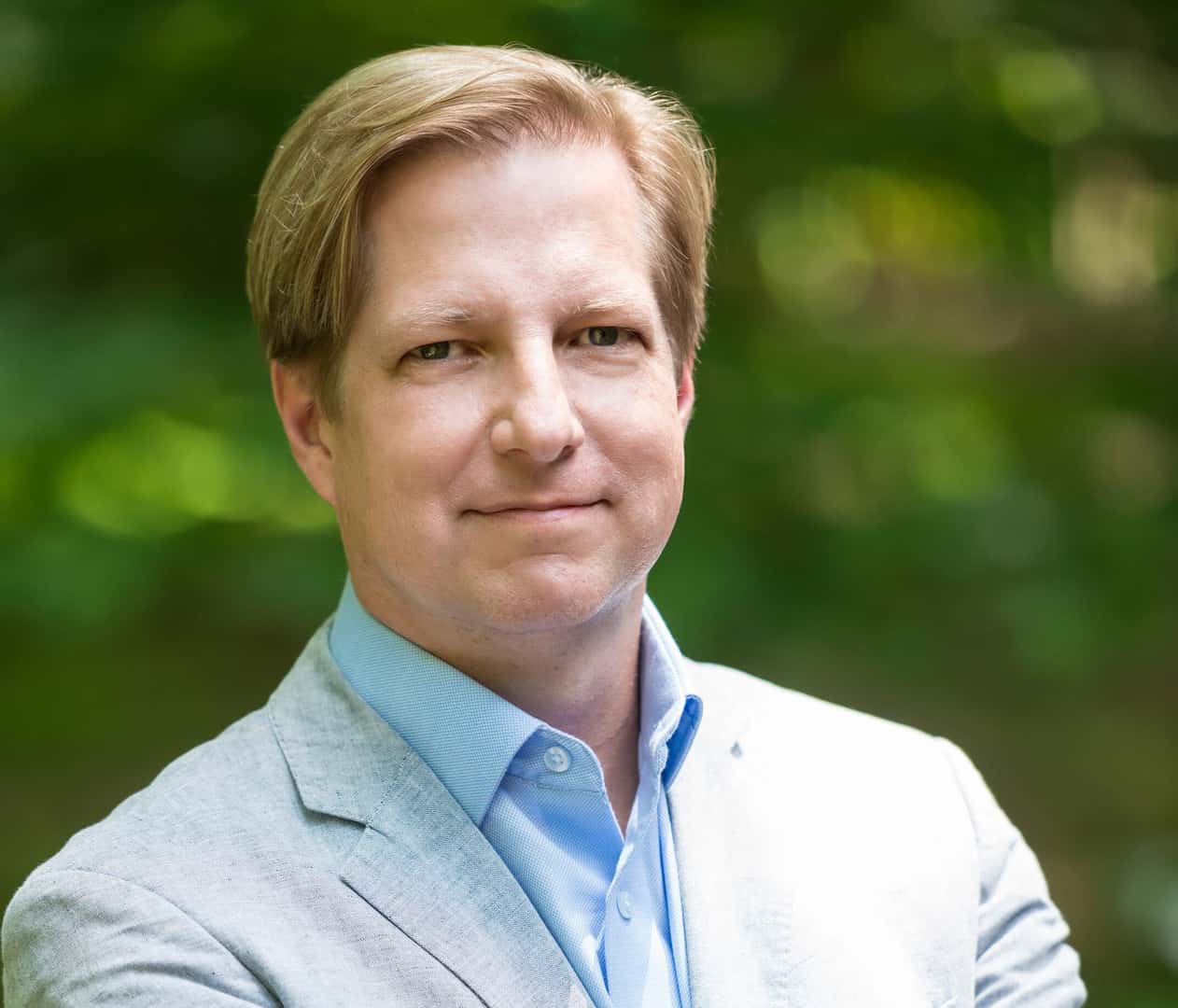Richard Boyd has had an extraordinary career that has led him to work with brilliant people and become a global expert in Machine Learning, AI, and 3D computer gaming.
He describes his career as having evolved organically, pursuing things he found interesting, combined with deliberately collecting people who are smarter than him. It was a habit he began in college, listening and buying coffees for smart people working within fields he was involved in. Richard says he didn’t have the MBA that everyone assumed, and while he might have benefited from one, his passion has always got him through.
Early Career
Richard had grown up on military bases and chose to study military history at college. He had a plan to study law, though the costs daunted him. He was also studying for a degree in English as he loved to write. After he graduated, he met the Texan billionaire businessman who had previously run for President, Ross Perot, when he came to speak at the college.
Richard was in the front row. Perot asked about future plans. When Richard said law, Perot said that the U.S. had 5% of the world’s population and 85% of the world’s lawyers; why didn’t he do something that would make a difference and go into technology?
Richard did not even have a computer and thought tech meant cell phones. However, he was so inspired, he took a job as a Motorola salesman. He also bought a computer and started to learn elementary coding. His fiancée’s parents were not impressed, having thought they were getting a lawyer for a son-in-law.
Then he met David Smith, who was working on the set of the James Cameron movie, The Abyss, using some early virtual reality technology. Richard was entranced by what he was creating. He offered to work with David for no salary. The movie The Abyss was almost entirely underwater. Cameron was building the set inside a nuclear reactor in South Carolina. Using David’s 3d software called Virtus WalkThrough, they constructed the whole thing in 3D and then worked with the cinematographer, saving the company a fortune in production costs.
Richard stayed on in films, developing 3d within the sector, which included working on the first Mission: Impossible at Pinewood Studios. James Cameron would say to friends, “Talk to Richard; he saved me lots of cash,” and then Richard would get a call from someone he had never met asking for his help.
Richard helped transform the Virtus Corporation from being the first salesperson to expanding it throughout the world. They sent him to Hollywood to teach what 3D could achieve in film at the American Film Institute, and he found audiences that included Sydney Pollack and Danny DeVito, reflecting in wonder that he was just a guy who does a bit with computers.
Richard and David started several companies together using the Virtus real-time 3D software capability, moving back into games as well. These included Red Storm Entertainment with Tom Clancy and Timeline Computer Entertainment with Michael Crichton. Richard remembers seeing the opportunity for education in games even back then and overspending on research for a game set in fourteenth-century France. They spent too much of the budget on getting the historical features accurate.
By 2001, he had sold the company he started, called 3DVillage, and Red Storm Entertainment had been acquired by the French company Ubisoft. All were ahead of their time. Air8 was a smartphone company, and another case in point. They had been to Japan to meet with NTT Docomo and had seen something very similar to what would become the Apple iPhone. They could see how big it could be and came back to the US, aiming to set up deals to supply the software, but it was still 2001, five years before the iPhone came out, and people weren’t getting it at that point.

3Dsolve
For Richard and his colleagues, everything changed with 9/11 in 2001. It had a profound effect, and they felt they needed to use their skills and knowledge to have a more positive impact. The military seemed a good option, so Richard went down to Fort Bragg, explaining what he could do with 3d simulation gaming. They recognised him as the guy who had worked with Tom Clancy and took him to the Special Operations Command. The result was that the company pivoted entirely to become a defence contractor and reformed as 3Dsolve.
3Dsolve’s first project was helping the US Army Training and Doctrine Command harness simulation learning for small-unit tactical ops. It used fully simulated 3D environments and collaborative simulation 3D game-based worlds for communications to solve government and military problems, particularly with training.
They built the virtual Digital Tactical Operation Centres to train soldiers going into Iraq and Afghanistan. They also created a simulation of an entire Los Angeles-class submarine to eventually replace ships allocated for training.
3Dsolve needed financing, and they brainstormed their smart contacts and met with people in Silicon Valley. One was Reid Hoffman, who had just left the board of PayPal along with Elon Musk and Peter Thiel. Richard had also met Joi Ito when he was still a DJ, a long time before Joi became a director of MIT Media Labs. Both Reid and Joi invested in 3Dsolve. Recently, Richards says he saw an article entitled “The eight people who secretly run the world.” Joi and Reid were two of them.
Later, Lockheed Martin acquired 3Dsolve, renaming it ”Virtual World Labs (long before the Facebook Metaverse was born). Richard stayed on as a director for five years. Generally, at Lockheed, he found people keen to talk about innovation but lacking the commitment to fund it.
At Lockheed, they worked with the Military Flying Training Service to train all the aircrew members for the UK. They were given freedom of method but only got paid when training was complete. This made them focus on the shortest, best combinations of time spent in the classroom, in simulators, and so on, plus become ultra-selective about the people they took. But the result was that people got trained between a third and a half time quicker.
After five years, Reid, Richard, and Joi Ito started to question how to use tech for even more serious benefits. Reid asked, “How do you impact a billion people positively?” The answers included healthcare, space, renewable energy, and education.
Machine learning, 3D simulations to Education
Tom Vander Ark, who served as the first Executive Director of Education at the Gates Foundation, had written: “Getting Smart.” They asked themselves, “What type of people do we want to make?”
On another occasion, Richard was enjoying a scotch one day with Michael Crichton (creator of Jurassic Park and ER) when Michael observed that if they could use the same 3D simulations in flight deck training in education, people could go through high school in half the time. James Cameron and his wife had also set up a school in Malibu called Muse School, trying to reinvent education, and Richard was asked by Cameron to join the board.
Speeding up learning is about getting the right time spent on the right areas of training in the right way and in a safe practice environment where people can work in their loop, known in short as the shortest path to mastery.
Richard has worked with many educational establishments on 3D simulations and educational mastery, including the University of Arizona, where students were able to go into virtual worlds and inside virtual bodies to experience what they were learning.
Richard has co-authored a best-selling, industry-leading book on Virtual Reality Modelling Language (VRML) technologies, The Virtus VRML Toolkit.
Impacting Healthcare
Richard tried to get Lockheed interested in education, convinced that if they could train pilots through simulators, they could apply the same principles to maths and algebra, but with little success.
However, Lockheed did see that rising healthcare costs were a national security issue and turned to Richard to brainstorm solutions. Richard had by then formed Virtual World Labs within Lockheed Martin, whose members developed and patented a stream of AI, VR, and AR., and they started to look at how health was performing, drawing on experiences from aviation with 3Dsolve.
Fifteen years ago, doctors were not even using checklists. In the ICUs of good hospitals in Boston and Johns Hopkins, they found terrible systems engineering. Machines bought randomly from assorted manufacturers had switches that were top left on one, bottom right on another. Not even the clocks worked in tandem. Stunned, they made a video about their simulation technology called Ice Storm (Integrated Clinical Environment, Systems, Training, Organisation Research, and Methods), which won an Emmy.
120,000 people were dying unnecessarily every year. Even in a good hospital, you have a 17% chance of being harmed by something unrelated to what you went in for. There was no safety interlocking. Doctors practice on patients instead of using 3D simulations. The problems were complex, and Richard found himself back on stage, providing a keynote at the annual HIMSS conference, talking alongside Robert Reich and Michael J Fox and once again wondered how he had got there.
Richard continues to work on these issues. He has also developed 3D BioMe, a real-time 3D physiology model of the human body that people can use to self-manage their health and platforms for simulations.
Back In 2013, Richard had also founded Tanjo, bringing together both his experience and his passions.
Tanjo.ai and Healthcare Impact
Richard had discovered machine learning in 2009 with Virtual World Labs when it was just emerging, and it was still barely recognised even in 2014. Tanjo helps companies, governments, and individuals balance and optimise humans and machines in many different areas, including the US Department of Education, for which they created the Learning Registry.
Tanjo ai. bridges the gap between humans and computers to optimise both and improve performance. In part, it is about organising, analysing, and enabling access to the correct information.
Their Tanjo Enterprise Brain reads, scans, and organises every piece of knowledge in an organization available on a particular subject for easy access whenever needed, resulting in more pertinent, extensive knowledge. The results achieved for their customers using their machine learning are phenomenal, with ROI that can be 10x, but has once been as high as 1600x
Originally for market research use, they created the Tanjo Animated Personas (TAP), but this would have further use for studies in health and wellness. With COVID, the combination of their ability to reach the correct information and their abilities to model human behaviors has been used not just to track viral spread but to help work out the best outcomes in terms of behavior and communication to move the world into an era of a healthier ecosystem, improve the training of medical staff and examining of patients.
The impact on the medical world can be colossal. Telepresence and practising on simulated patients before each intervention, whether surgical or non-invasive, will benefit tremendously from VR and simulation learning. In addition, simulations and serious games will allow both patients and doctors content-rich and persuasive experiences, engage students in immersive learning, and successfully train workforces remotely. These combine to build digital resilience to future disruptive events.

Learning from Great Minds and Being a Force for Good
Richard says achieving is about overcoming inertia, and we need people to be willing to change and save lives. That is why he likes working with James Cameron and Elon Musk. They ask first-principles questions, such as what kind of people we want people to be and why education is publicly funded. Elon asks what space assumptions can be challenged with new tech.
Richard will continue to try and change things for the better as long as he can. He is a member of the Atlantic Council Geotech Action Centre, working towards a better future for our planet.
Ever since Jeremy Rifkin’s book “The Third Industrial Revolution” came out, he, Joi, and Reid talk about renewable energy all the time, convinced that we need to decentralise power and move away from fossilized fuels urgently. We are too vulnerable to oil prices, political issues, and just plain damaged pipelines. Richard thinks the US should have added a dollar to gas prices when it was cheap to invest in renewables. China is smart about it, along with some other countries, but not America.
The future doesn’t have to be terrifying. Richard had a professor at college who used to say that the suffering on earth is just resolving bad ideas.
Advice for other entrepreneurs:
When Richard takes entrepreneurship classes, he asks the students what their passion is. If they say they want to make a lot of money, he tells them to go to Wall Street. Entrepreneurs need to find out what they are passionate about and do something with that. Then, like Richard, you will be in a constant state of FLOW and excited about every day.
His second piece of advice is to be careful who you do deals with when you raise money. He learned that one the hard way early on, on the sales of one of his companies, his cheque was missing a lot of zeros. He says to view it as a marriage and find a true partner who will be patient with you and share your goals.
Richard makes a point of interviewing everyone who works in one of his companies, right down to the receptionist. He says he looks for the light to come on in their eyes when they talk about working there. If you can achieve that, then everything becomes easier.
At 3DSolve, he would drive by their offices on a Saturday night, take his wife to dinner, and see all the lights on. Going in to check, he found his whole team there eating pizza and brainstorming. That was where they wanted to be.
Lockheed sent Richard on a course to learn to motivate people. He questioned why and was told he would be allocated people who might not want to work there. It was compliance by compulsion instead of his leadership style, which is to provide fantastic resources for people who wish to work with them. Lockheed was a rude awakening: Better to get people on your team who light up.

If you enjoy stories about extraordinary entrepreneurs, you might like to read about Chad Wasilinkoff of Helicoid Industries.


